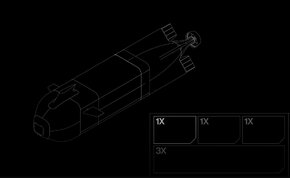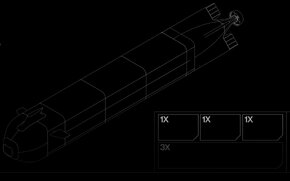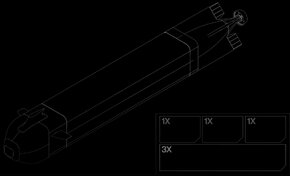It was up to 40 weeks for the replacement shaft. If they ordered one mid 2024, Supply should be back in service within the next 3 months.Saw HMAS Supply in the dry dock yesterday while going past on the ferry so that suggests some movement is happening on this side of the country.
Royal Australian Navy Discussions and Updates 2.0
- Thread starter OPSSG
- Start date
Todjaeger
Potstirrer
Having looked at the timeline, things a look a bit different. JP2070 (the Australian LWT replacement programme for the ADF) had the Phase 1 RFP close in July 1999, per this ANAO report from 2010.I would not be surprised if one did a timeline analysis of the project you would find something like the following. At the time of the ship design and competition, the Eurotorp was much better than the Mk 42. Mk 54 wasn't really prime time yet when the decision was likely made. Given the time lag on the project it was probably cheaper to just keep going with the Eurotorp then change anything. Its a very good torp.
The fact Australia has stuck with the Eurotorp likely means it has better performance in X number of categories (shallow water perhaps) or the juice isn't worth the squeeze to switch. Maybe during the Hobarts midlife they will look at a system that is torpedo agnostic and will shoot whatever you put in it. Canada bought such a system for the Rivers.
AFAIK the Mk 54 LWT the US developed as a replacement for the Mk 50 and Mk 46 (which was originally to be replaced itself by the Mk 50) started developmental testing in July 1999, so I do not believe it would have been possible for a Mk 54 RFP to be submitted. The Mk 54 itself was developed in part due to the high costs of the Mk 50, as well as to improve upon weaknesses in the Mk 46 which was really designed for blue water usage and not in littoral areas.
The MU90 does appear to have a greater max depth, as well as higher max speed. Other areas of performance are not known publicly. One thing which is definitely different though and could explain why vessels designed to use MU90 were not changed over to Mk 54 has to due with the LWT propulsion and power source. The Mk 54, like the Mk 46, uses the liquid Otto II fuel whilst the MU90 uses a battery. As a result of the Otto II liquid fuel, the magazine where the LWT's are stored need to be designed with that in mind. When the Hobart-class DDG's were being built, the expectation had been that embarked naval helicopters would use air-launched MU90, but with the select of MH-60R Seahawks as well as P-8 Poseidons, Australia found itself with the Mk 54 LWT to launch from aircraft. This triggered a need for the hangar magazine in the DDG's to get redesigned since they were not original designed or built to accommodate Otto II fuel.
The impression this left me is that one of the major issues with LWT selection is not which system to use to launched the torps, but in different torpedoes having different fuel/power properties, which leads to different requirements in order to safely handle and store the torps aboard ship.
If Australia already has a stockpile of MU90's, and it would require a redesign and refit of RAN destroyers to have them entirely fitted out for the Mk 54, I could easily see the MU90 being kept in service until they began expiring.
iambuzzard
Well-Known Member
Slightly off topic, but how did a technology we developed here and sold off to the Americans who promptly shut down, end up with the Chinese who are even using it's original name "Metal Storm"?

 armyrecognition.com
armyrecognition.com

Exclusive: China Unveils “World’s Most Powerful Machine Gun” to Stop Hypersonic Missiles
Exclusive: China Unveils Multi-Barreled Weapon That Outguns US Phalanx Close-In Weapon to Tackle Hypersonic Missiles
devo99
Well-Known Member
I'm pretty sure the original Metal Storm electromagnetic ignition patents are now owned by Skyborne Technologies who use it on their Cerberus GLH drone. Thirty years on it's no surprise if the technology is much easier to develop so I wouldn't assume the Chinese system has much to do with the original system at all beyond the basics of the technology. We can also assume a lot of the fundamental issues still apply like needing to reload it all the time and ballistics changing as the projectile stack gets shorter and therefore the barrel length effectively gets longer.
I don't personally see how this system would be especially effective against hypersonic missiles seeing as it still has to be trained in the general direction and at the close range where it will be effective, what's left of the missile is still likely to hit the ship with serious kinetic energy. Essentially the same reason any gun based CIWS probably isn't a reliable counter to hypersonic missiles.
I don't personally see how this system would be especially effective against hypersonic missiles seeing as it still has to be trained in the general direction and at the close range where it will be effective, what's left of the missile is still likely to hit the ship with serious kinetic energy. Essentially the same reason any gun based CIWS probably isn't a reliable counter to hypersonic missiles.
Ghost Shark or ‘DIVE XL’ payloads

 www.navalnews.com
www.navalnews.com

 www.navalnews.com
www.navalnews.com
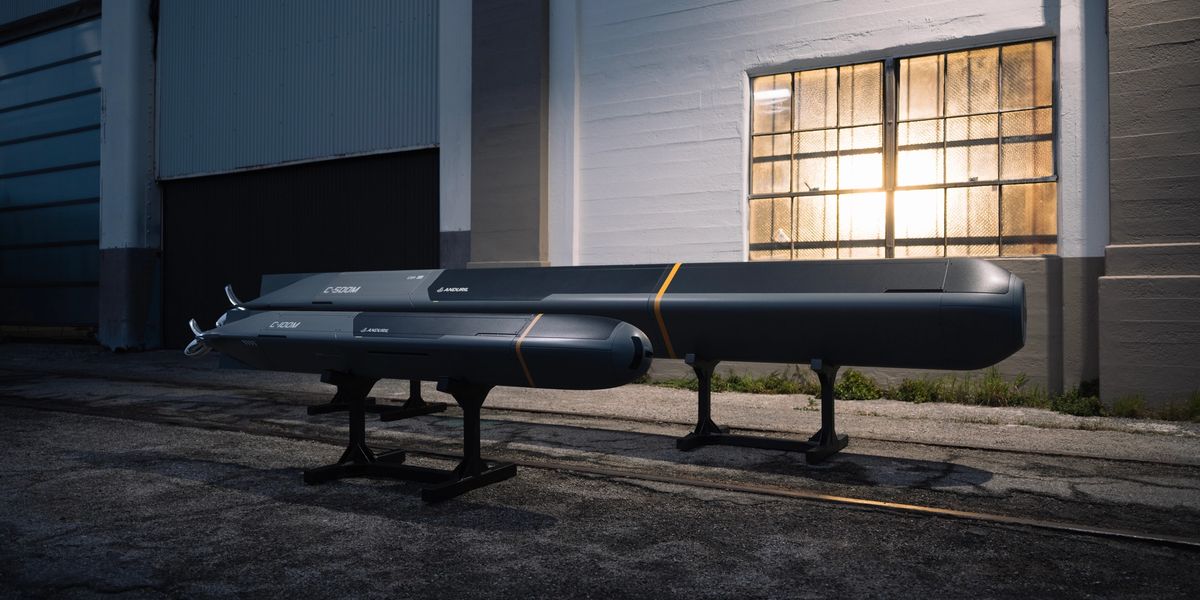

 www.anduril.com
www.anduril.com
Copperhead-100M dimensions (106 inches long x 12.75 inch diameter), 100 pound payload. >30 knot speed.
Copperhead-500M dimensions (163 inches long x 21 inch diameter), 500 pound payload. >30 knot speed.
‘A Dive-XL can carry dozens of the smaller Copperhead-M and “multiple” of the larger size’

Anduril unveils Copperhead-M: A torpedo designed specifically for drones - Naval News
Anduril is announcing the launch of Copperhead, a high-speed, software-defined family of Autonomous Underwater Vehicles (AUV) built for delivery by autonomous systems.

Anduril Introduces Seabed Sentry Undersea Sensor Network - Naval News
Seabed Sentry uses artificial intelligence to provide highly accurate, persistent autonomous awareness on the seafloor for commercial and military customers.


Seabed Sentry
AI-enabled sensor that brings connectivity and awareness to the deep dark sea.
Copperhead-100M dimensions (106 inches long x 12.75 inch diameter), 100 pound payload. >30 knot speed.
Copperhead-500M dimensions (163 inches long x 21 inch diameter), 500 pound payload. >30 knot speed.
‘A Dive-XL can carry dozens of the smaller Copperhead-M and “multiple” of the larger size’
Attachments
-
86.8 KB Views: 11
-
93.6 KB Views: 11
-
106.5 KB Views: 11
-
101.6 KB Views: 11
Last edited:
Anduril continues to push itself as a One Stop Shop for all your autonomous vehicles, systems and weapons needs . One concept that could be of interest to Australia is their hyperscale manufacturing facility concept. Put simply it allows you to build the entire Anduril product range under one roof.
Anduril is currently constructing one of these facilities in Ohio and is hinting that it is planning it built a second in the territory of a US ally.
Anduril is currently constructing one of these facilities in Ohio and is hinting that it is planning it built a second in the territory of a US ally.
iambuzzard
Well-Known Member
Are these designed to be smart torpedos? Reco for a target and then engage it with a warhead?Anduril continues to push itself as a One Stop Shop for all your autonomous vehicles, systems and weapons needs . One concept that could be of interest to Australia is their hyperscale manufacturing facility concept. Put simply it allows you to build the entire Anduril product range under one roof.
Anduril is currently constructing one of these facilities in Ohio and is hinting that it is planning it built a second in the territory of a US ally.
Good question. The headline of this article suggests yes but when you read the rest of it doesn't really confirm it.Are these designed to be smart torpedos? Reco for a target and then engage it with a warhead?

Anduril unveils Copperhead autonomous torpedo launched from an autonomous platform - EX2 for Defence Innovators
Anduril Industries has announced Copperhead, which it describes as a high-speed, software-defined family of Autonomous Underwater Vehicles (AUV) built for delivery by larger autonomous systems. Or torpedoes, to use an older expression. Victory at sea will require large fleets of autonomous...
 www.ex2.com.au
www.ex2.com.au
Just as interesting in my opinion is the Seabed Sentry. This is definitely AI driven and would seem to be a force multiplier for a force multiplier.

Anduril Introduces Seabed Sentry undersea sensor network - EX2 for Defence Innovators
Californian company Anduril Industries has launched Seabed Sentry, an AI-enabled, mobile, undersea network of sensor nodes linked by undisclosed means for persistent monitoring and real time communication. Seabed Sentry uses Artificial Intelligence (AI) to provide highly accurate, persistent...
 www.ex2.com.au
www.ex2.com.au
For those who are in need of a hearty moment, here's a fight off between a Hobart/ANZAC against a 54/55 pairing.
While it's a bit simplistic, it shows our ships can put up a better fight than people think. Lots of missile cells doesn't always equate to battlefield dominance.
And to think in a different time we could have seen all this off our coast a few weeks ago.
I need to get me some deck chairs and a beer.
It does make you wonder how modern combat between ships would be conducted. It is hard to imagine ships willingly engaging in this sort of battle. Almost mutually assured destruction. Also emptying your VLS tubes may well see you survive the first volley of missiles but leaves you a sitting duck for what comes after that. Add to that the transparency of the modern battlefield combined with an array of long range strike weapons and life becomes very hard if not impossible for large slow moving warships.
For those who are in need of a hearty moment, here's a fight off between a Hobart/ANZAC against a 54/55 pairing.
While it's a bit simplistic, it shows our ships can put up a better fight than people think. Lots of missile cells doesn't always equate to battlefield dominance.
And to think in a different time we could have seen all this off our coast a few weeks ago.
I need to get me some deck chairs and a beer.
It would be interesting to see a large scale simulation of kill chains involving ships, submarines, drones, aircraft, stand off weapons, logistics, ISR and just about any other capability you can think of. You would need massive amounts of computing power to simulate something of that scale.
Going Boeing
Well-Known Member
This article is an interesting read about some interest from the USN about adapting the Patriot PAC-3 MSE missile being integrated with AEGIS for firing from MK41 VLS. It would be suitable for replacing SM-2 in the long term as it becomes obsolete.
What piqued my interest later in the article was the discussion about a possible smaller version, PAC-3 CRI (Cost Reduction Initiative) which would be capable of quad packing in MK41’s. This would result in a reduced range but would add significant numbers of missiles which would cover the defensive layer section between ESSM2 and SM-6. As has been stated before, quantity has a quality of its own.
Patriot PAC-3 Missile Puts Crosshairs On Replacing Navy's Long-Serving SM-2
What piqued my interest later in the article was the discussion about a possible smaller version, PAC-3 CRI (Cost Reduction Initiative) which would be capable of quad packing in MK41’s. This would result in a reduced range but would add significant numbers of missiles which would cover the defensive layer section between ESSM2 and SM-6. As has been stated before, quantity has a quality of its own.
Patriot PAC-3 Missile Puts Crosshairs On Replacing Navy's Long-Serving SM-2
For those who are in need of a hearty moment, here's a fight off between a Hobart/ANZAC against a 54/55 pairing.
While it's a bit simplistic, it shows our ships can put up a better fight than people think. Lots of missile cells doesn't always equate to battlefield dominance.
And to think in a different time we could have seen all this off our coast a few weeks ago.
I need to get me some deck chairs and a beer.
Enjoyable to watch but the missiles never do any evasion maneouveurs. They just fly straight line.
I'm yet to read anything suggesting the SM2 is approaching obsolescence. It's just had a technology refresh, and is still the basic building block for the SM3 and SM6 derivatives.This article is an interesting read about some interest from the USN about adapting the Patriot PAC-3 MSE missile being integrated with AEGIS for firing from MK41 VLS. It would be suitable for replacing SM-2 in the long term as it becomes obsolete.
What piqued my interest later in the article was the discussion about a possible smaller version, PAC-3 CRI (Cost Reduction Initiative) which would be capable of quad packing in MK41’s. This would result in a reduced range but would add significant numbers of missiles which would cover the defensive layer section between ESSM2 and SM-6. As has been stated before, quantity has a quality of its own.
Patriot PAC-3 Missile Puts Crosshairs On Replacing Navy's Long-Serving SM-2
My understanding was that the PAC3 could be a good supplementary/complimentary missile in a time when inventories are short. Note PAC3 is a Lockheed Martin product whereas the SM series is Raytheon, so these articles contain a bit of competitor positioning.
While I get the production line for the PAC3 pumps out more than the SM equivalent, 600 missiles per annum is still a small number when aligning with worldwide demand as everybody rearms. I think the PAC3 will become just as scarce to access as the SMs over the next decade. Moreover, Raytheon are upgrading their production facility, just they are lagging Lockheed Martin at the moment.
In regards to the PAC3 replacement, I'm thinking it is more likely to go down the PAAC4 pathway, which is the Davids Sling Skyceptor missile. It, on media releases, has a price that is 20% of the PAC3.
Last edited:
iambuzzard
Well-Known Member
I'll join you Sammy. What's your choice of beverage? And importantly, what state are you in? Lol
For those who are in need of a hearty moment, here's a fight off between a Hobart/ANZAC against a 54/55 pairing.
While it's a bit simplistic, it shows our ships can put up a better fight than people think. Lots of missile cells doesn't always equate to battlefield dominance.
And to think in a different time we could have seen all this off our coast a few weeks ago.
I need to get me some deck chairs and a beer.
I'm a Tasmanian by birth, living in WA, so that's a six pack of Boags and the same for Little Creatures.I'll join you Sammy. What's your choice of beverage? And importantly, what state are you in? Lol
SM-2 IIICU and SM-6 IU updates were only announced late last year.I'm yet to read anything suggesting the SM2 is approaching obsolescence. It's just had a technology refresh, and is still the basic building block for the SM3 and SM6 derivatives.
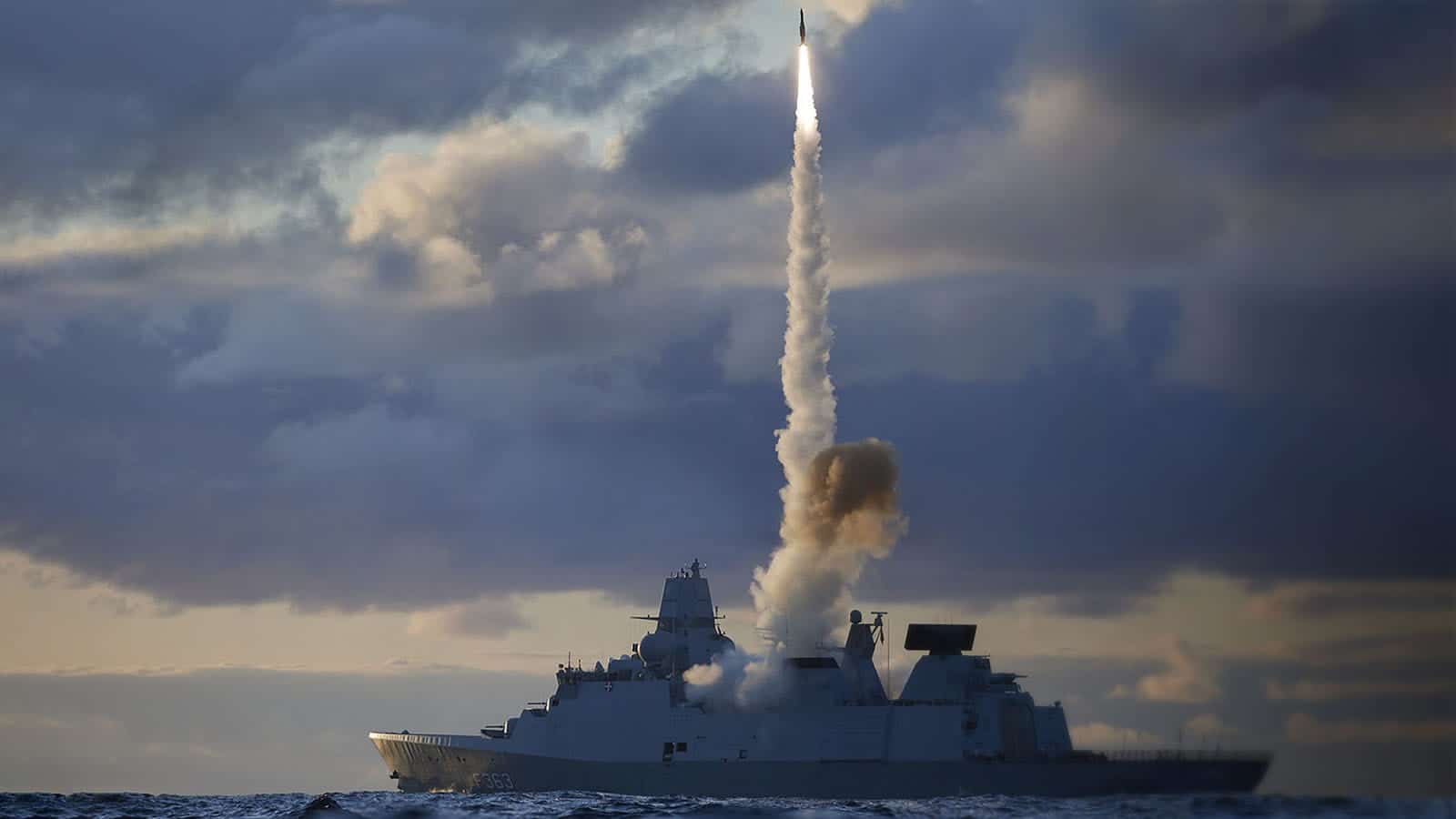
RTX to Develop SM-2 Block IIICU and SM-6 Block IU Missile Variants - Naval News
Raytheon has been awarded a $344 million contract for the development of two missile variants – the SM-2 Block IIICU and SM-6 Block IU.
Im pretty sure SM-6 is like double or triple the mass of PAC3.
There was some talk about quad packing PAC3 and for it augmenting SM-2 and SM-6..
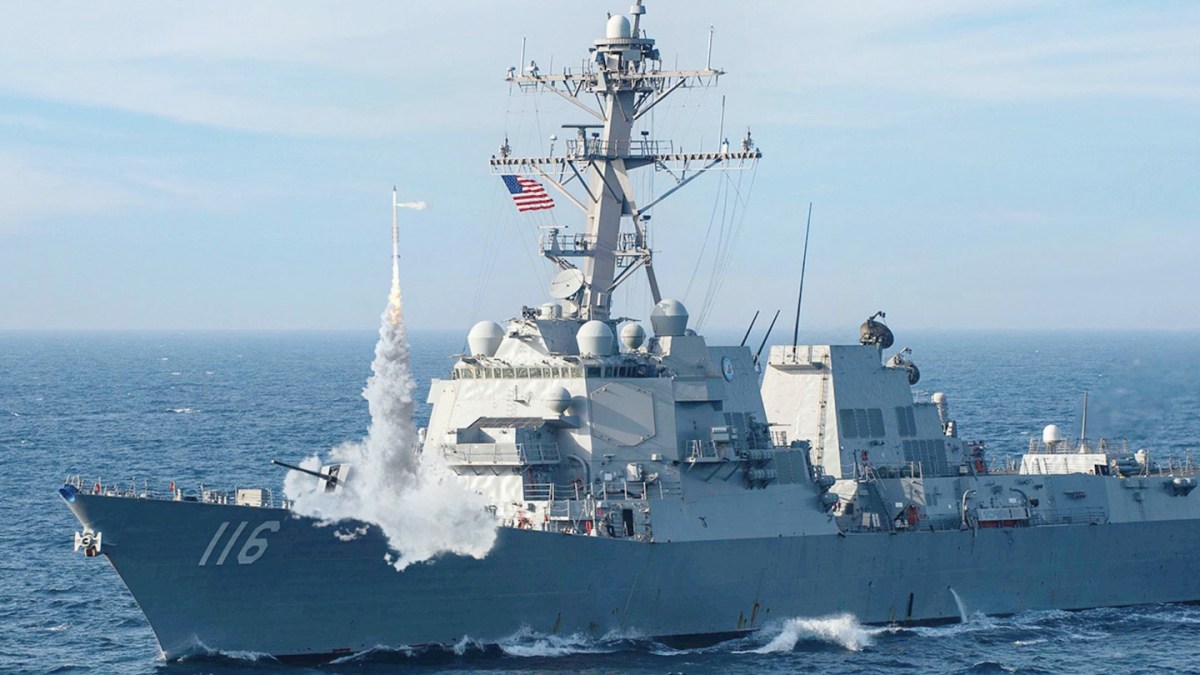
Patriot PAC-3 Missile Puts Crosshairs On Replacing Navy's Long-Serving SM-2
Putting the proven PAC-3 MSE missile on warships could fill a notable niche, and possibly a looming supply gap, in the Navy’s layered air defenses.
If it could be quad packed, it would be interesting, because it would offer a lot more firepower per VLS, Fitting in between SM-6 and say ESSM. Particularly on smaller ships like the RAN has. But the USN didn't fund it.
The skyceptor is an interesting missile… and one I think Australia should invest in. It looks as though it can be intergrated quickly into our nassam batteries… which we need many more of. Giving us a ballistic missile defence system with a very low cost compared to going all out. It has range and is cheap compared to other missiles on the market. Most likely could also be produced here. Is the skyceptor able to be launched from VLS cells? This would be a great solution. What’s everyone’s take on the skyceptor and the option of not waiting on large delays and sovereign manufacturing?
downunderblue
Well-Known Member
Call me crazy, but I just can't see the this Government wanting to buy anything associated with the State of Israel (regardless it was built with US money and partnered with a US firm). Am just being pragmatic as regardless of the perceived value, they don't trust Netanyahu to not cause more problems, and in turn heed criticism and calls to cancel/ suspend any contract from the far left in Caucus and in parliament from the Greens.
Politics is about pragmatism and self interest. Buying from Israel has political risk all over it, regardless of how good it is. Politicians like easy solutions and this is not easy.
Politics is about pragmatism and self interest. Buying from Israel has political risk all over it, regardless of how good it is. Politicians like easy solutions and this is not easy.
downunderblue
Well-Known Member
The Australian Guided Weapons and Explosive Ordnance Plan from a naval SAM pov seems to centred around SM-2 to SM-6. Is anyone saying that the 7 billion should be spent elsewhere?
"$7 billion agreement with the United States to acquire the Standard Missile 2 Block IIIC (SM-2 IIIC) and Standard Missile 6 (SM-6) long-range missiles".
Raytheon is also boosting their production line for SM-3. Amid calls to increase IADS (particularly ABM) around Darwin and FBW, I'm putting 2 and 2 together to suggest a future order (expensive as it is) to equip the Hobart's, even if it's piecemeal solution at best initially?
"$7 billion agreement with the United States to acquire the Standard Missile 2 Block IIIC (SM-2 IIIC) and Standard Missile 6 (SM-6) long-range missiles".
Raytheon is also boosting their production line for SM-3. Amid calls to increase IADS (particularly ABM) around Darwin and FBW, I'm putting 2 and 2 together to suggest a future order (expensive as it is) to equip the Hobart's, even if it's piecemeal solution at best initially?

